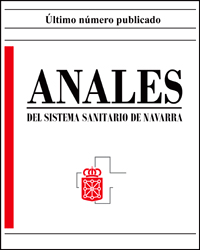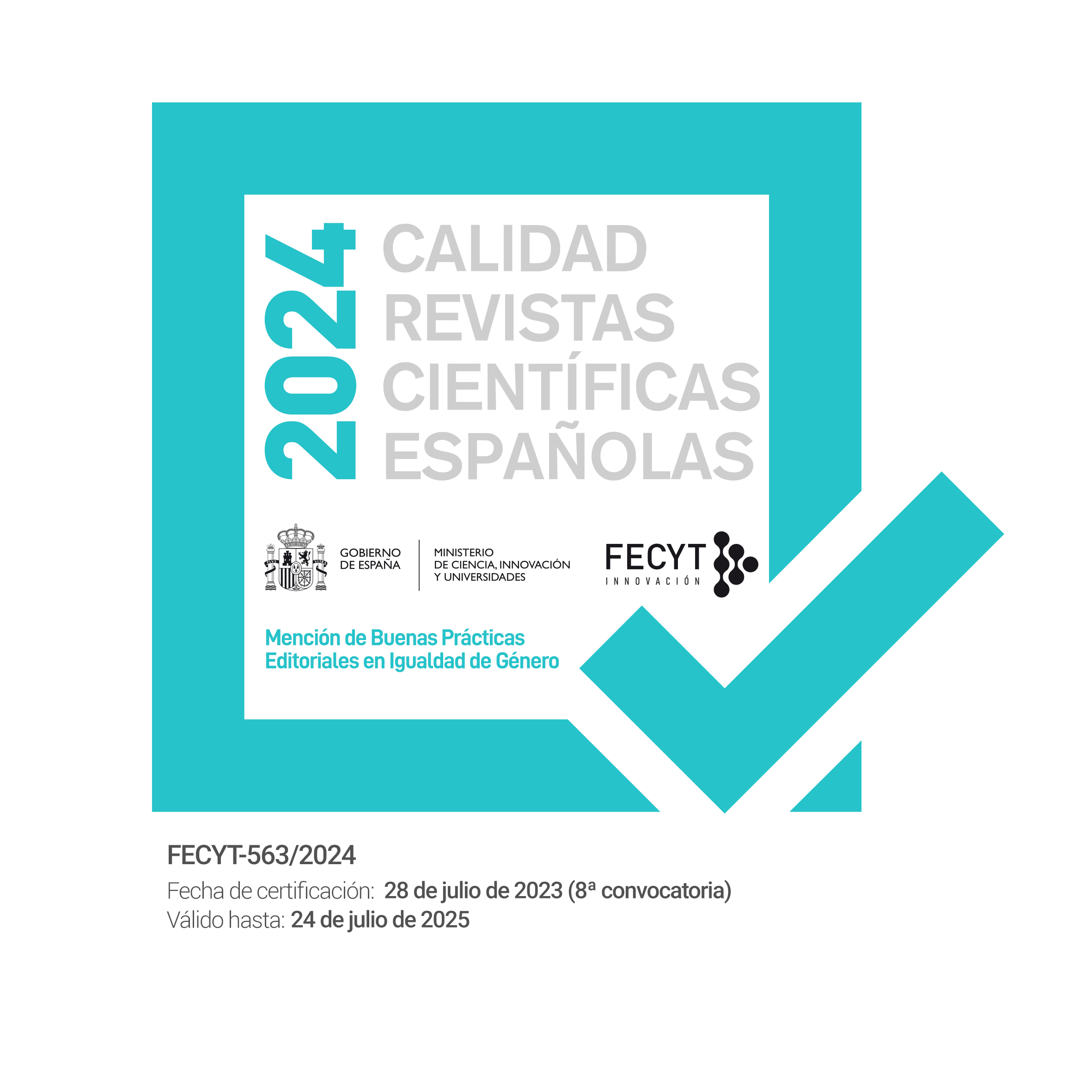Valoración de la formación de niños en reanimación cardiopulmonar mediante cuentos y dibujos animados
DOI:
https://doi.org/10.23938/ASSN.1061Palabras clave:
Formación, Reanimación Cardiopulmonar, Maestros, Familia, Niños salvan vidasResumen
Fundamento. El objetivo de este estudio es comparar los resultados obtenidos en escolares formados en RCP por progenitores en el ambiente familiar y por profesores en el ambiente educativo.
Método. Estudio aleatorizado del aprendizaje de RCP en escolares de Educación Primaria (1º y 2º curso) de la Región de Murcia. Los progenitores (grupo familia, GF) y profesores (grupo maestros, GM) han participado como formadores a través de un material didáctico adaptado para escolares (un cuento y un vídeo de dibujos animados) de la serie educativa Jacinto y sus Amigos©. Se evaluaron ocho conocimientos y cinco habilidades prácticas.
Resultados. Se seleccionaron 160 escolares y terminaron el estudio 116; el GF presentó 51,3% de pérdidas. Los escolares formados por el GM obtuvieron puntuaciones medianas significativamente mayores tanto en conocimiento teórico (6,7; RIC=1,8 vs 4,7; RIC=3,1; p<0,001) como en todas las habilidades prácticas a excepción de reconocer un situación de emergencia. En el GF, la enseñanza sobre RCP con un cuento y un vídeo de dibujos animados logró puntuaciones significativamente mejores en cinco conocimientos y en cuatro habilidades que con solo un cuento.
Conclusiones. La implementación de recursos educativos no tecnológicos, cómo cuentos y dibujos animados, en la enseñanza de la RCP en escolares de primaria aumenta los conocimientos y habilidades. Los escolares formados por los maestros en el ámbito educativo han aprendido significativamente más que los formados por la familia y, dentro del ámbito familiar, la enseñanza sobre RCP fue más eficaz mediante un cuento y un vídeo de dibujos animados que cuando simplemente disponen del cuento.
Descargas
Citas
ROSELL ORTIZ F, LÓPEZ MESSA JB, MELLADO VERGEL FJ. Registro español de parada cardiaca extrahospitalaria. Presentación del Proyecto de Investigación ‘Aspectos epidemiológicos, variabilidad y supervivencia en la atención a la parada cardiaca extrahospitalaria por servicios de emergencia en España’. REMI 2012; A150. http://www.medicina-intensiva.com/2012/10/A150.html
PALACIO VILLAZÓN R, NONIDE ROBLES M, CARREÑO MORÁN F, LÓPEZ ROLDAN L, CAO FERNÁNDEZ A. Proyecto “con tus manos puedes salvar vidas”. RqR Enfermería Comunitaria (Revista de SEAPA) 2015; 3(2): 35-43. http://ria.asturias.es/RIA/handle/123456789/5025
PERKINS GD, GRAESNER JT, SEMERARO F, OLASVEENGEN T, SOAR J, LOTT C et al. European Resuscitation Council Guidelines 2021: Executive summary. Resuscitation 2021; 161:1-60. doi: 10.1016/j.resuscitation.2021.02.003..
ROMAN-PATRIK L, VAN AKEN H, MÖLHOFF T, WEBER T, RAMMERT M, WILD E et al. Kids save lives: a six-year longitudinal study of schoolchildren learning cardiopulmonary resuscitation: Who should do the teaching and will the effects last? Resuscitation 2016; 101: 35-40. https://doi.org/10.1016/j.resuscitation.2016.01.028
Consejo Español de Resucitación Cardiopulmonar. http://www.cercp.org/el-cercp/consejo-espanol-de-rcp
FOLKE F, GISLASON GH, LIPPERT FK, NIELSEN SL, WEEKE P, HANSEN ML et al. Differences between out-of-hospital cardiac arrest in residential and public locations and implications for public-access defibrillation. Circulation 2010; 122(6): 623-630. doi: 10.1161/CIRCULATIONAHA.109.924423
GARCÍA VEGA FJ, MONTERO PÉREZ FJ, ENCINAS PUENTE RM. La comunidad escolar como objetivo de la formación en resucitación: la RCP en las escuelas. Emergencias 2008; 20: 223-225.
BÖTTIGER BW, VAN AKEN H. Kids save lives. Resuscitation 2015; 94: A5-A7. http://dx.doi.org/10.1016/j.resuscitation.2015.07.005
MIRÓ O, DÍAZ N, SÁNCHEZ M. Aprender reanimación cardiopulmonar desde la escuela. Emergencias 2017; 24(6): 423-425.
FRADEJAS SASTRE V, PÉREZ VELASCO P. Importancia de una comunidad educativa formada en técnicas de reanimación cardiopulmonar. Nuberus Científica 2013; 2(10): 13-17. https://dialnet.unirioja.es/servlet/articulo?codigo=7552812&orden=0&info=link
La enfermedad cardiovascular mata en España 65 veces más que los accidentes de tráfico. Sociedad Española de Cardiología 2015. http://secardiologia.es
CEREZO ESPINOSA C, NIETO CABALLERO S, JUGUERA RODRÍGUEZ L, CASTEJÓN-MOCHÓN JF, SEGURA MELGAREJO F, SÁNCHEZ MARTÍNEZ CM et al. Learning cardiopulmonary resuscitation theory with face-to-face versus audiovisual instruction for secondary school students: a randomized controlled trial. Emergencias 2018; 30(1): 28-34.
The Scottish Government: Out-of-Hospital Cardiac Arrest - A Strategy for Scotland Review 2015-16. This review reports on the activities and achievements of the Out-of-hospital Cardiac Arrest (OHCA) Strategy for Scotland. https://beta.gov.scot/publications/out-hospital-cardiac-arrest-strategy-scotland-review-2015-16/pages/5/
NAVARRO PATÓN R, GARCÍA MARÍN P, RODRÍGUEZ FERNÁNDEZ JE. Conocimientos previos y adquiridos tras una jornada de formación sobre primeros auxilios en futuros docentes de Educación Física. Sportis 2015; 1(3): 191-206. https://doi.org/10.17979/sportis.2015.1.3.1413
BÖTTIGER BW, BOSSAERT LL, CASTRÉN M, CIMPOESU D, GEORGIOU M, GREIF R et al; Board of European Resuscitation Council (ERC). Kids Save Lives –ERC position statement on school children education in CPR.“Hands that help – Training children is training for life”. Resuscitation 2016; 105: A1-A3. doi.org/10.1016/j.resuscitation.2016.06.005
BOHN A, LUKAS RP, BRECKWOLDTC J, BÖTTIGER BW, VAN AKEN H. (2015). ‘Kids save lives’: why schoolchildren should train in cardiopulmonary resuscitation. Curr Opin Crit Care 2015; 21(3): 220-225. doi: 10.1097/MCC.0000000000000204
HORI S, SUZUKI M, YAMAZAKI M, AIKAWA N, YAMAZAKI H. Cardiopulmonary resuscitation training in schools: a comparison of trainee satisfaction among different age groups. Keio J Med 2016: 65(3): 49-56. doi: 10.2302/kjm.2015-0009-OA
NORD A, SVENSSON L, HULT H, KREITZ-SANDBERG S, NILSSON L. Effect of mobile application-based versus DVD-based CPR training on students’ practical CPR skills and willingness to act: a cluster randomised study. BMJ Open 2016; 6(4): e010717. doi:10.1136/bmjopen-2015-010717
LUKAS RP, AKENA HV, MÖLHOFFB T, WEBER T, RAMMERT M, WILD E et al. Kids save lives: a six-year longitudinal study of schoolchildren learning cardiopulmonary resuscitation: Who should do the teaching and will the effects last? Resuscitation 2016; 101: 35-40. doi: 10.1016/j.resuscitation.2016.01.028
MPOTOS N, VEKEMAN E, MONSIEURS K, DERESE A, VALCKE M. Knowledge and willingness to teach cardiopulmonary resuscitation: a survey amongst 4273 teachers Resuscitation 2014; 84: 496-500. doi: 10.1016/j.resuscitation.2013.01.023
TALAVERA ORTEGA M, GAVIDIA CATALÁN V. Dificultades para el desarrollo de la educación para la Salud en la escuela. Opiniones del profesorado. Didáctica de las Ciencias Experimentales y Sociales 2007; 21: 119-128. https://dialnet.unirioja.es/descarga/articulo/2476009.pdf
ZINCKERNAGEL L, MALTA HANSEN C, ROD MH, FOLKE F, TORP-PEDERSEN C, TJØRNHØJ-THOMSEN T. What are the barriers to implementation of cardiopulmonary resuscitation training in secondary schools? A qualitative study. BMJ Open 2016; 6(4): e10481. doi:10.1136/bmjopen-2015-010481
CAVE DM, AUFDERHEIDE TP, BEESON J, ELLISON A, GREGORY A, HAZINSKI MF et al. Importance and implementation of training in cardiopulmonary resuscitation and automated external defibrillation in schools: A science advisory from the American Heart Association. Circulation 2011: 123(6): 691-706. doi: 10.1161/CIR.0b013e31820b5328
GREIF R, LOCKEY A, BRECKWOLDT J, CARMONA F, CONAGHAN P, KUZOVLEV A et al. European Resuscitation Council Guidelines 2021: Education for resuscitation. Resuscitation 2021; 161: 388-407. doi: 10.1016/j.resuscitation.2021.02.016
LOUIS CJ, BEAUMONT C, VELILLA N, GREIF R, FERNANDEZ J, REYERO D. The “ABC SAVES LIVES”: A schoolteacher-led basic life support program in Navarra, Spain. SAGE Open 2022; 12(3): . https://doi.org/10.1177/21582440221124478
LÓPEZ MM, ORTEGA SA, RÍOS MP, RUIZ RM. Serious Games for Health, una herramienta efectiva para el entrenamiento de los profesionales sanitarios. Aten Primaria 2022; 54(7): 102376. doi: 10.1016/j.aprim.2022.102376
ALCÁZAR ARTERO PM, PARDO RIOS M, GREIF R, OCAMPO CERVANTES AB, GIJÓN-NOGUERON G, BARCALA-FURELOS R et al. Efficiency of virtual reality for cardiopulmonary resuscitation training of adult laypersons: A systematic review. Medicine (Baltimore) 2023; 102(4): e32736. doi: 10.1097/MD.0000000000032736
Publicado
Cómo citar
Número
Sección
Licencia

Esta obra está bajo una licencia internacional Creative Commons Atribución-CompartirIgual 4.0.
La revista Anales del Sistema Sanitario de Navarra es publicada por el Departamento de Salud del Gobierno de Navarra (España), quien conserva los derechos patrimoniales (copyright ) sobre el artículo publicado y favorece y permite la difusión del mismo bajo licencia Creative Commons Reconocimiento-CompartirIgual 4.0 Internacional (CC BY-SA 4.0). Esta licencia permite copiar, usar, difundir, transmitir y exponer públicamente el artículo, siempre que siempre que se cite la autoría y la publicación inicial en Anales del Sistema Sanitario de Navarra, y se distinga la existencia de esta licencia de uso.








